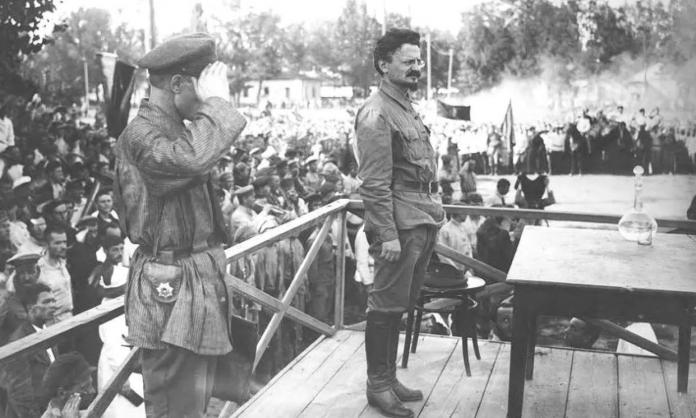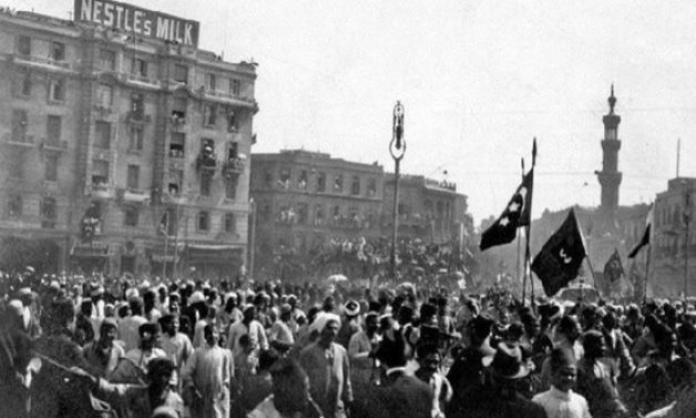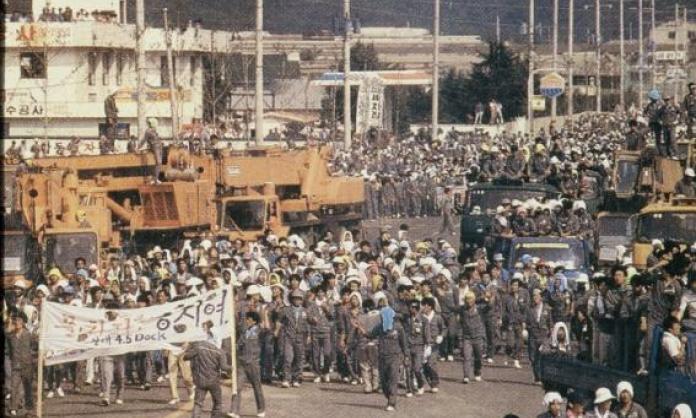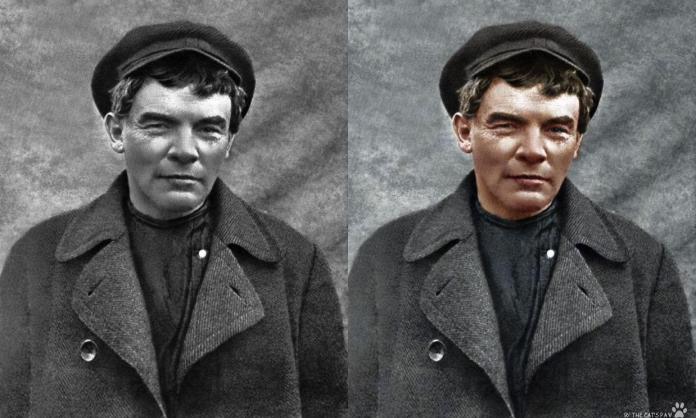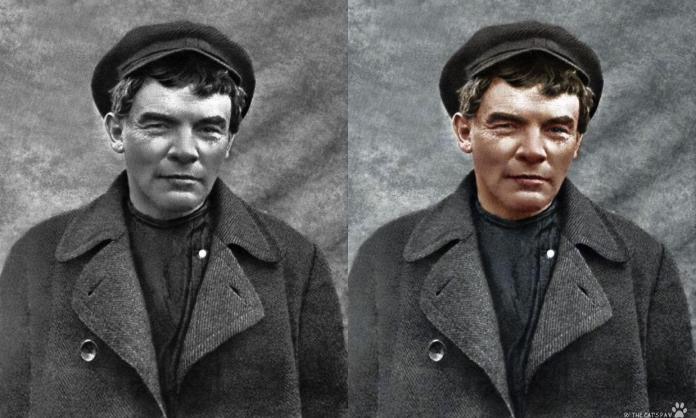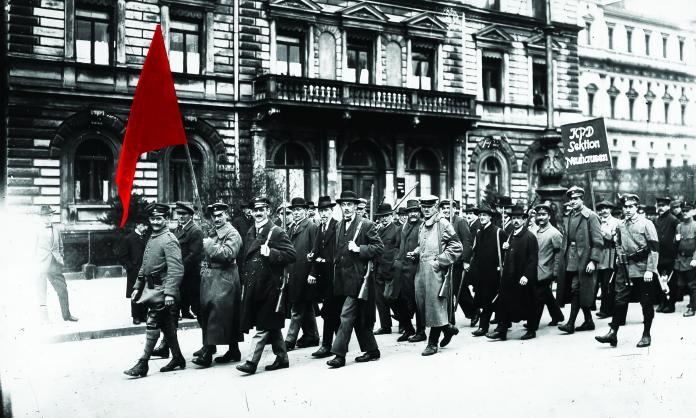If there’s one thing hardcore Stalinists and Cold War anti-communists can agree on, it’s that Trotskyists are the enemy.
Internet-based leftists deride Trotskyists as deluded ultra-lefts who refuse to accept the “actually existing socialism” of China or North Korea as CIA agents, fascist sympathisers and people who just won’t stop selling newspapers.
On the right, Trotsky continues to inspire hatred from the most ardent defenders of the capitalist status quo. Conservative historian Robert Service’s 600-page biography of Trotsky is so vitriolic in its attempt to discredit him politically and personally, it’s obvious that Trotsky’s spectre still haunts the minds of the establishment across the world. When the hardened neoliberal apparatus of the British Labour Party attempted to rig their party’s leadership rules against the left, they dubbed the project "Operation Ice-pick", in reference to the weapon Stalin’s assassins used to murder Trotsky in 1940.
How can Trotskyism unite both Stalinists and conservatives in shared hatred? What were Leon Trotsky’s contributions to Marxism, and what are the core elements of the tradition he established?
As a persecuted revolutionary in the tsarist empire, Trotsky spent most of his youth in prison or in exile. When he returned to Russia in 1917, the country was in the throes of a workers’ revolution. As chair of the Petrograd soviet, the centre of the radical working-class democracy that emerged during the collapse of tsarism, Trotsky became the most forceful public agitator for workers’ power. In October, he helped lead the most democratic uprising in history, which toppled the capitalist provisional government and brought the working class to power.
The survival of the Russian Revolution, encircled by capitalist powers, always depended on the revolution spreading internationally. Trotsky participated in the establishment of the Commmunist International, a body dedicated to coordinating the activity of revolutionary workers’ parties across the world.
As the organiser of the new Red Army, Trotsky led the successful defence of the revolution against fourteen invading armies. It was at this time that he earned his description as "the ogre of Europe" from Winston Churchill, who never got over being bested on the battlefield by a revolutionary Marxist.
But this victory came at a great cost. The Russian working class was decimated. The radical working-class democracy that drove the revolution forward collapsed.A new layer of bureaucrats and administrators took power—a layer whose champion was Stalin. As Stalin gained power, the gains of the revolution were reversed. Institutions of workers’ democracy were liquidated. The goal of international revolution was abandoned. A cult of personality was established around Stalin, personalising politics in a way that was completely alien to Marxism.
For much of the 20th century, apologists for Western capitalism and Stalinist dictatorship were painted as implacable opponents, locked in a Cold War between rival ideologies. In reality, their systems of thought and the societies they defended mirrored one another. Both believed that economic growth and military supremacy were the greatest measure of success. Both believed that an army of managers in the factories and bureaucrats in the state were needed to rule over the working class.
Against this conservative consensus, virtually anybody who continued to defend revolutionary methods, in Russia or abroad, came to be accused of Trotskyism. Just as Stalin constructed a monstrous regime around his personality, he personalised the opposition. Trotsky became its figurehead as the most prominent defender of the legacy of the revolution and the most consistent upholder of workers’ democracy. “All the old formulae of Bolshevism were named ‘Trotskyist’”, Trotsky himself later said. “The genuine thing in Bolshevism is opposed to every privilege, to the oppression of the majority by the minority. It was named ‘the program of Trotskyism’. That was the beginning of the frame-up.”
The Stalinist regime heaped on Trotsky incredible slander—including accusations that he plotted terror against communists, sabotaged railroads and collaborated with Hitler’s regime in Germany. These ludicrous accusations were the product of a regime based on lies and bureaucratic manipulation, the constant erasing and rewriting of history. Trotsky was not alone in facing these accusations: they were inseparable from the purges that took place as part of the Moscow show trials, which eliminated the entire surviving revolutionary leadership of 1917. After Stalin’s death, most of the prominent leaders who had been framed and murdered were officially “rehabilitated” as the regime confessed the charges were lies. Trotsky was the only revolutionary leader never to be absolved by the regime; unlike many others, he had never wavered in his revolutionary politics.
The physical annihilation of the greatest generation of revolutionaries in history was not just about eliminating potential opposition to Stalin’s rule. It was also about extinguishing the historical memory of the Russian Revolution. The Communist International was transformed into an instrument of Soviet foreign policy, and its constituent parties were subordinated to the needs of the ruling bureaucracy in Russia. Hard-won lessons in revolutionary strategy were erased.
The Stalinists who continue to adhere to the ridiculous claims made against Trotsky reproduce Stalinism’s hostility to historical truth.That means they can’t engage seriously with the experience of the Communist International and the real revolutionary tradition. The lessons that Stalinism quickly jettisoned are the heritage that Trotskyists have since attempted to defend. Four of these ideas make up the core of Trotskyism.
Trotsky’s first and most distinctive contribution was his theory of permanent revolution. This was an attempt to analyse the prospects for revolution in Russia, an underdeveloped country plagued by remnants of feudalism, but with a rapidly growing, militant working class. Trotsky agreed with Lenin’s Bolsheviks that the working class needed to lead the struggle for democracy. He disagreed with the moderate socialists, who argued that workers should unite with Russia’s capitalists in a struggle for liberal democracy. Only an independently organised working class could smash the remnants of feudalism and advance society. But Trotsky argued that once the working class seized state power, they would inevitably begin to transform capitalist property relations, and to challenge all forms of exploitation. To try to establish socialism in a backward country like Russia was impossible, but a revolution there would act as a beacon for the rest of the workers’ movement, opening the possibility for socialism to be constructed on an international basis.
This was the essential perspective that Lenin adopted when he returned to Russia in April 1917 and declared unequivocally for a working-class seizure of power to herald the beginning of international socialist revolution. Trotsky’s theory contained strategic arguments which are key to understanding subsequent workers’ revolutions. Stalinists would later argue, much like the right-wing socialists in Russia, that workers needed to form alliances with the liberal capitalists and hold back on more radical, revolutionary struggles. Trotsky asserted the need for the independent working-class organisation. Stalin promoted the anti-Marxist illusion of “socialism in one country”, which meant the bureaucracy assuming total power over the Russian economy, while socialists around the world had to subordinate their struggles to the national interests of the Stalinist government. Trotsky restated the centrality of internationalism to Marxist politics. Trotsky’s perspective reminds us that processes that begin as political revolutions, challenges to specific governments or state forms, open up the space for a struggle for workers’ power.
Secondly, Trotskyism upheld the strategy of the united front. Trotsky did not invent this: it was generalised from the experience of the Communist International. The united front involves revolutionary organisations making proposals to reformist forces for joint action around specific demands. The purpose of the united front was to strengthen the working class through unified struggle, while retaining revolutionaries’ organisational independence. That would allow revolutionaries to win over the great number of workers who still followed the reformist parties. Revolutionaries would be shown to be the most effective fighters in practice, and their criticisms of reformism would not be muted even during a joint struggle. In a report to the Communist International in 1922, Trotsky argued: “The reformists dread the revolutionary potential of the mass movement; their beloved arena is the parliamentary tribune, the trade union offices ... [We are] interested in dragging the reformists from their asylums and placing them alongside ourselves before the eyes of the struggling masses. With a correct tactic we can only stand to gain from this”. The success of the strategy was dependent on revolutionaries maintaining complete independence and ceaseless criticism of more moderate forces.
When Stalin came to power, the utility of the united front was either completely disregarded or thoroughly distorted. First, Communist parties were ordered to adopt a new line, referring to reformist leaders and organisations as “social fascists”, no better than the Nazis. Ironically, this supposedly “radical” approach allowed reformists to ignore the Communist parties: working class militants who believed in reformism were unlikely to pay much attention to critiques from people who denounced them as fascists. For the Communists themselves, the attitude encouraged passivity in the face of the genuine threat of fascism. Against this insanity, Trotsky urged the German Communist Party to initiate a workers’ united front to stop Hitler, but this went unheeded.
Shortly after Hitler’s accession to power, the Stalinists announced a total U-turn. Communist parties were directed by Stalin into a “popular front”, an uncritical alliance with reformist and “progressive capitalist” forces, mostly focused on making sure liberal and reformist governments came to power. In practice, this meant trying to share state power with capitalist politicians and assisting them in breaking strikes and other working class struggles. When a workers’ revolution broke out in Spain, Stalinists joined in liberal coalition governments and waged an onslaught against workers’ power in the factories. This led to ideological adaptation to liberalism: in the United States, Communists carried images of George Washington alongside Lenin and announced, “Communism is 20th Century Americanism”.
A third core element of Trotskyism is a rejection of the possibility of a parliamentary road to socialism. The main motivation for the creation of the Communist International was to draw a line of division between workers’ parties that wanted to overthrow the capitalist state and those that wanted to administer it. Over time, Stalinised parties abandoned this position, adapting themselves to their own national ruling classes and mirroring the social democratic parties they were initially established to combat. The Communist Party of Great Britain declared in 1951, “[T]he people of Britain can transform capitalist democracy into a real People’s Democracy, transforming Parliament, the product of Britain’s historic struggle for democracy, into the democratic instrument of the will of the vast majority of her people”. Paying lip-service to workers’ revolution in the far-off future, in practice the Stalinist parties became experts in holding back workers’ struggle while promoting parliamentary reformism.
By the time of the wave of radical uprisings in 1968, workers and students influenced by Trotskyist and anti-Stalinist ideas confronted Communist parties more interested in charting a path to a parliamentary majority than developing a challenge to the capitalist state.
Trotskyists fight actively to build revolutionary organisations. The central lesson Trotsky drew from the experience of 1917 was the indispensable role of the Bolshevik party, which consistently argued for and struggled to construct workers’ power. Without mass organisations that can defend a revolutionary political perspective against hostile reformist forces and repressive capitalist institutions, even the broadest and most profound working-class radicalisation will ultimately go down to defeat. But these organisations don’t emerge automatically, in the heat of battle. It takes patient and systematic work, laying political foundations, clarifying ideas and participating in movements while building your forces. And yes, sometimes this means selling a publication on a street corner.
For much of the 20th century, the politics of the workers’ movement were dominated by the stifling forces of Stalinism and social democracy. But individuals and organisers inspired by Trotskyism have been found in virtually every fight.
Some of the first “Trotskyists” met their fate in one of Stalin’s gulags, the Vorkuta prison camp. They organised a hunger strike against political persecution, and refused to work more than eight hours, honouring one of the greatest achievements of their revolution. Hundreds of them were driven out into the tundra and shot.
The first Trotskyist organisations were formed by people driven out of the Communist Parties because they rejected both the parties’ bureaucratic methods and their counter-revolutionary politics. The American Communist James Cannon became convinced of Trotsky’s critique of "socialism in one country” when an opposition document was mistakenly circulated at a congress of the Communist International, by then dominated by the Stalinist bureaucracy. He invited other revolutionary delegates to secretly read and discuss it. Thousands just like him established the Trotskyist tradition across the globe.
Balmain ironworker Nick Origlass, a pioneer of Australian Trotskyism, could bring 3,000 workers out on strike just to reinstate him as a union delegate. He fought the fascist New Guard on the streets in the 1930s and, as mayor of Leichhardt in the 1970s, led ceaseless demonstrations in his ceremonial robes.
Trotskyists in Britain led the fight against the fascist National Front, which was growing rapidly in the fertile soil of the economic collapse and political crisis of the late 1970s. At the Battle of Lewisham, the Nazis were prevented from marching by a coalition of revolutionary socialists, unionists and migrants, dealing them a blow they never recovered from.
In France, they could be found at the centre of last year’s mass strike movement against the Macron government’s attacks on pensions, both in rank-and-file organising meetings of striking railworkers and on the the campuses, where Trotskyist students barricaded exam entrances and brought hundreds onto the streets in solidarity with the struggle.
Stalinism encouraged personality cults—and largely invented the term “Trotskyism”. That can make the term itself a little confusing. Identifying with Trotsky’s legacy isn’t about saying that the Soviet Union would have been genuinely socialist if Trotsky had taken charge. Nor should it be about agreeing with every argument, prognosis or prediction Trotsky made.
Trotsky misjudged the strength and stability of the Stalinist bureaucracy in Russia, describing it as “a sphere balanced on the point of a pyramid” which would soon fall down due to its own instability. Contrary to his prediction, Stalinism emerged from WWII strengthened. Because Trotsky believed that Stalinism would rapidly disintegrate across the globe and workers would be driven back to genuine revolutionary politics, Trotsky announced the formation of a Fourth International to replace the bankrupt Comintern. But the Fourth International did not quickly attract millions, or even many thousands, of followers. While Trotsky underestimated the challenge involved in breaking masses of workers from the Stalinist parties, he was right to attempt to build political organisations around his ideas.
Revolutionaries can sharply disagree on questions of strategy and political program. Upholding Marxism as a revolutionary, internationalist working-class politics requires an uncompromising opposition to both Western capitalism and Stalinist dictatorship, a belief in the possibility and necessity of working-class revolution, and a defence of some of the most important lessons learned by the workers’ movement through its history. If you stand for these ideas, and want to organise around them, you’re already a Trotskyist in the eyes of much of the world.
As a teenager, the Marxist revolutionary Pierre Broué was expelled from the Stalinist French Communist Party during World War II when he argued to defeat the Nazis using revolutionary methods. He agitated for German soldiers to reject the war and mutiny against their officers, as Russian soldiers had done in 1917. Broué was told he suffered from “Trotskyism”, an illness with which he was unfamiliar. After a little digging in a library, he soon found out, and committed his life to defending genuine revolutionary Marxism.
Broué’s story contains an important lesson for today: If somebody accuses you of being a Trotskyist, it means you’re probably doing something right.




